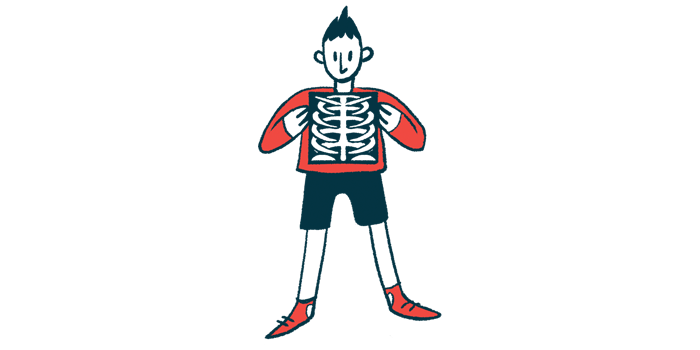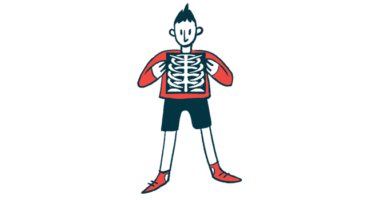Bone Surgery Corrects Rare Spinal Deformity in Man, 24, With AS
Patient could not face forward when walking, team noted in case report

Researchers have described a successful bone surgery to correct a rare type of spinal deformity in a man with ankylosing spondylitis (AS) that had prevented him from facing forward while walking — marking the first case report of this type of spinal surgery for an AS patient.
While AS patients often undergo bone surgery to correct spinal problems, this type of deformity is more rarely reported, and its surgical management had not been as well-established, according to researchers.
“Through this case, we hope to draw … attention to spinal axial deformity and provide a reference in the surgical treatment of spinal axial deformity,” the researchers wrote.
The case report, “Cervical rotational osteotomy for correction of axial deformity in a patient with ankylosing spondylitis,” was published in the European Spine Journal.
AS is an inflammatory disease that primarily affects the spine and sacroiliac joints linking the pelvis to the lower spine. In late disease stages, patients may develop significant spinal deformities that affect their ability to look forward or lie down. Such deformities also can cause walking problems and difficulty breathing or swallowing.
In humans, the spine is comprised of different segments, or planes, with varying rotational abilities that facilitate movements. The sagittal plane — a longitudinal plane of the body — is most often affected in AS.
Bone surgery in AS
Osteotomy, a type of surgical procedure that involves cutting bones to reshape or realign them, is commonly used to correct sagittal deformities. However, there is a lack of reports about surgically treating other types of deformities, namely, axial ones. The axial plane is a horizontal plane in the body.
In this case, researchers in China described the surgical treatment of an axial deformity in a 24-year-old man with AS. The man, who’d been living with AS for 12 years, had reported recurrent neck stiffness, with an inability to rotate or flex it, over the last five years.
Because his neck was rotated toward the left in a fixed position, he had to rotate his entire body to the right in order to look forward while walking. That led to walking difficulties, easy tiring, and hip pain. The patient had received a bilateral hip replacement a year earlier.
An examination showed the man had normal limb strength and sensitivity in the torso and limbs. CT scans revealed that large portions of his spine were fused together, and its axial rotational abilities were limited.
Essentially, his spine “resembled a rigid stick, and had lost most of [its] rotational function,” the researchers wrote.
The goal of surgical intervention was to correct the deformity in the cervical spine — the region that runs through the neck and connects to the skull — to restore the man’s ability to move his neck.
The clinicians performed an osteotomy at the junction between the cervical spine and the thoracic spine segment that lies below it to correct the deformity. This area was chosen because of its relative safety compared with higher levels of the cervical spine, the researchers noted.
Basically, the team cut the bones where they were fused together, and manually rotated the patient’s head so it would be facing forward. Then, rods were implanted to fix everything in place.
Immediately after surgery, the man experienced nerve root paralysis in his spine, with symptoms including left arm pain, abnormal sensations, and grip weakness in his hands.
“Cervical osteotomies are among the most difficult procedures to perform,” the researchers wrote, noting that medical complications like nerve root paralysis are common.
His symptoms improved with a course of methylprednisolone, a steroid treatment, and methycobal, or vitamin B12. They were completely resolved after three months.
He was able to move two days after surgery and wore a collar to support his neck for three months.
Ultimately, the surgery was successful and the man was able to rotate his neck forward and walk normally. Post-operative X-rays showed that the neck rotational deformity was mostly corrected, and this was maintained at one- and three- year follow-up visits.
“A longer follow-up will be needed,” the researchers wrote, adding, “More case reports will be needed to finesse the technique and evaluate the clinical outcome of cervical rotational osteotomy.”







